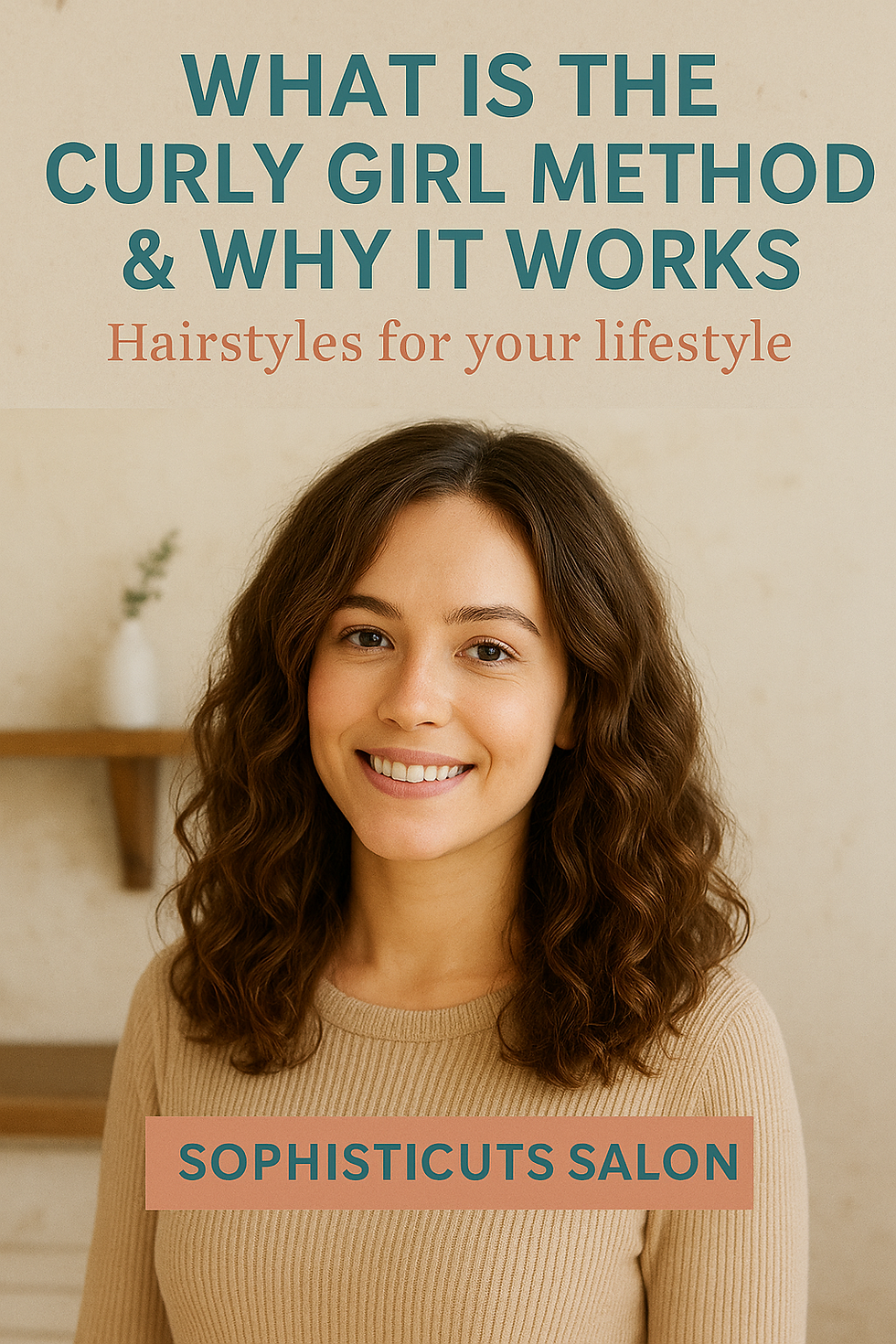Mature Hair
- Sophisticuts Salon
- Aug 20, 2018
- 4 min read

As we age, our hair goes through different stages that keep us constantly looking for new ways to manage it. The challenges we experience are due to changes in hormones. From birth, through puberty, during pregnancy, menopause and over all aging our hair changes with each season in life.
It Turns Grey
It's not all your fault. A huge factor is genetics. The type and color of grey you end up with is passed on to you by your parents. While we can't change our genetics, there are other reasons for greying hair that we can control. Stress, unhealthy diet, extreme lifestyle, lack of sleep, and serious illness can all play a roll in how soon we see that first grey hair as well as how quickly we see the next ones. Typically, we start to see grey hairs peaking through in our early 30's. This is due a slow down in melanin production. Melanin is what gives color to our hair and skin. People with light skin tones have less melanin and tend to see those pesky little greys sooner.
While grey hair is inevitable, there are a few things we can do to make ourselves look and feel younger. Since hair color reacts differently on grey hair, it requires special formulas and processing times. All over color is always an option, but I have had huge success with reverse highlights for clients wanting to slow the appearance of aging or turn back just a few years.
It Gets Thinner
As we age, the density of our hair decreases. Yes, we actually have fewer individual hairs, leaving the hair thinner than our younger years. At around age 40, it starts to grow finer. Each strand of hair is skinnier which makes it even thinner. When you add in the slowing of replacement hairs by the follicle and increased shedding speeds, it's no wonder we feel as if we don't have much left. It is normal to shed 100 - 125 hairs a day, but as we age, those numbers start to climb, leaving us with less hair at the end of each day.
It Has Less Volume
With less hair that is now skinny (at least one part of us skinny), we start to notice a loss of volume and body. It gets more and more difficult to get the hairstyle we have enjoyed for the last few years. If you haven't already been using styling products in your hair, now is the time to start. You will want to use a product for hold (gel, mousse, creme), as well as a root lifter. You will find that these products will help your hair be more manageable, give it more volume and body, and help it hold your style longer.
It Breaks Easier
A deficiency in keratin protein levels causes grey hair to be weaker and less elastic. This makes it much more susceptible to breakage and damage. Since it can no longer stretch and retract, it is likely to break when tugged or pulled. The cuticle (outer protective layer) becomes more fragile and easier damaged. And to top it off, fine hair is naturally more prone to breakage.
Be very gentle with grey hair. Be mindful of everything you do to it. Use the correct tools and comb tangles out carefully. Keep in mind that special precautions need to be taken with chemical services. Hair will break easier during perms, leaving you with what I call "pocket curls".
It Grows Slower
With age, the rate at which your hair grows slows down and spends more time in the resting phase than the growing phase. This means your color, perm and style will last a little longer before it grows out. That's usually a good thing; just be sure you are happy with what you are getting, because it will take it longer to grow out. Unfortunately, it also means that your hair won't grow as long anymore, so you may have to find shorter styles.
It Gets Drier
Since your hair will naturally get drier as you age, you will want to be mindful of heat styling. Hot tools such as curling irons, flat irons, hot rollers, etc rob your hair of moisture. Keep these to a minimum and don't go over the same spot repeatedly. When using a blow dryer, be sure to keep the tip of the dryer 6-12 inches from your hair. Another culprit is over shampooing. Try going a couple more days between shampoos and use a deep conditioning mask once a week.
Texture Changes
The loss of proteins we experience can cause our hair to do some crazy things. The texture of grey hair is usually much different from the hair we've been dealing with. Sometimes grey hair is coarse and wiry, while other times, it is fine and soft. I have seen a client with straight hair have curly grey hair and I've seen a curly haired client have straight grey hair. There is no predictability with grey hair.
It Looks Duller
Grey hair doesn't reflect light as well as colored hair. Paired with the fact it's drier and lacks shine, it will look duller. You can use hair color to add color and shine to your dull hair, but keeping it healthy will go a long way in restoring the overall appearance of your hair.
Keep it Healthy
To have the best looking grey hair possible, eat a balanced diet, get plenty of sleep, keep it hydrated and restored with protein, and be good to it. Treat it carefully and pamper it a little, and use a deep conditioning mask every week.
.jpg)


Comments